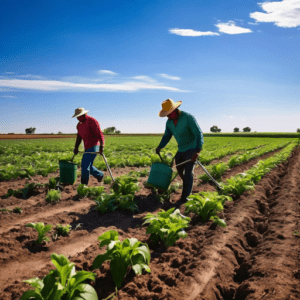India, aiming to reduce its fertiliser imports, has introduced a subsidy scheme for the production of Potash-Derived Molasses (PDM) by sugar mills. This move is part of a broader strategy to enhance domestic fertiliser production and achieve self-sufficiency in the sector.
1. The Subsidy Scheme
The government has set a mutually agreed price of ₹4,263 per metric tonne for the sale of PDM by sugar mills to fertiliser companies. Additionally, PDM manufacturers can claim a subsidy of ₹345 per ton under the Nutrient Based Subsidy Scheme.
2. Utilising Molasses
PDM, a potassium-rich fertiliser, is derived from molasses, a by-product of the sugar-based ethanol industry. This innovative approach not only helps in managing waste but also boosts revenue for sugar mills.
3. The Impact on Import Dependency
India currently imports 100% of the potash it needs for fertilisers. By promoting the domestic production of PDM, the government aims to reduce import dependency and enhance self-reliance.
Also Read https://yadfarm.com/india-molasses-boosting-ethanol-sugar-exports/
4. Advantages of Potash-Derived Molasses
PDM contains 14.5% potash content, making it a viable alternative to Muriate of Potash (MOP), which is 60% potash. This makes PDM a cost-effective and efficient fertiliser option for farmers.
5. Achieving Self-Sufficiency in Urea
India aims to achieve self-sufficiency in urea production by 2025. This involves increasing production from 30 million tonnes to 31-31.5 million tonnes and replacing 2.5 million tonnes of demand with alternatives such as nano urea and urea gold.
6. Government Incentives
To encourage domestic production, the government plans to set up new plants and provide attractive incentives for manufacturers. This will further reduce import dependency and strengthen the local fertiliser industry.
7. Environmental Impact
By utilizing waste chemicals like spent wash to produce PDM, the government is promoting sustainable practices in the fertiliser industry. This reduces environmental pollution and promotes circular economy principles.
8. Current Fertiliser Scenario
India’s fertiliser requirement ranges from 58 to 63 million tonnes annually, but it produces only about 43 to 46 million tonnes. The rest is imported, leading to a significant financial burden on the government.

Img-Src:-agriculturepost.com
9. Cost Reduction Measures
The government aims to reduce its fertiliser subsidy expenditure by 13% in FY25. This cost-saving measure is part of the government’s broader fiscal strategy to enhance efficiency in subsidy allocation.
Conclusion
India’s initiative to promote the production of PDM by sugar mills is a significant step towards achieving self-sufficiency in fertiliser production. By reducing import dependency and promoting domestic production, India is not only ensuring food security but also creating a sustainable agricultural ecosystem.
Click Here For More Interesting News Articles
FAQs
- What is PDM, and how is it produced? PDM, or Potash-Derived Molasses, is a potassium-rich fertiliser derived from molasses, a by-product of the sugar-based ethanol industry. It is produced by processing ash from molasses-based distilleries.
- How does PDM compare to traditional fertilisers like MOP? PDM contains 14.5% potash content, making it a cost-effective alternative to Muriate of Potash (MOP), which has a potash content of 60%.
- What are the benefits of using PDM for farmers? PDM is a cost-effective and efficient fertiliser option for farmers, helping improve crop yield and soil fertility.
- How does India plan to achieve self-sufficiency in urea production? India aims to increase urea production from 30 million tonnes to 31-31.5 million tonnes and replace 2.5 million tonnes of demand with alternatives such as nano urea and urea gold by 2025.
- What are the environmental benefits of producing PDM? Producing PDM from waste chemicals like spent wash promotes sustainable practices, reduces environmental pollution, and supports circular economy principles.










